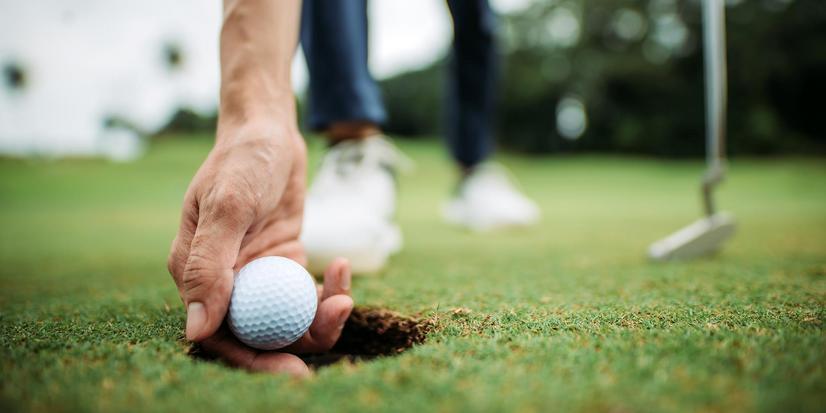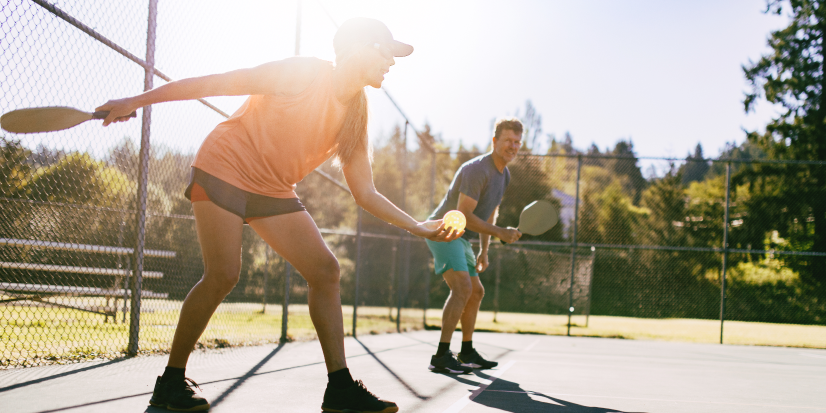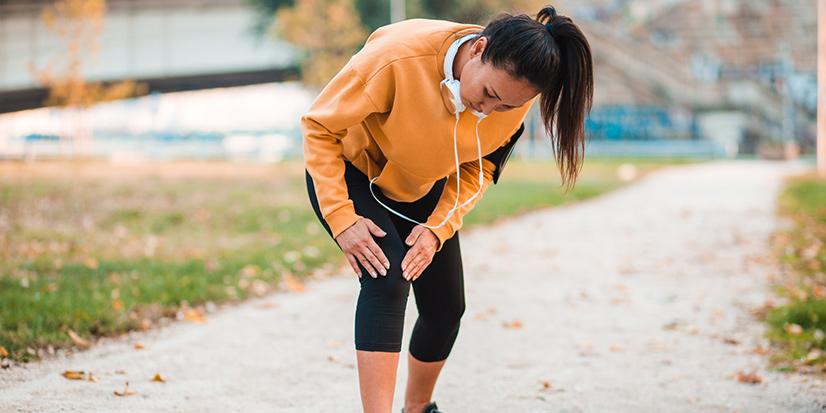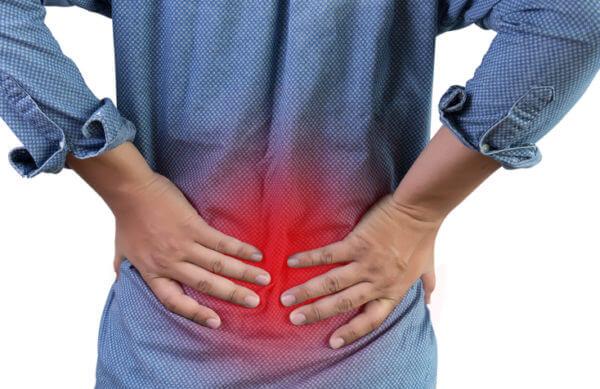The warm days of summer have arrived, and there’s no better time to be out on the golf course, enjoying the sunshine, swinging your clubs and trying your luck at getting a hole-in-one. Unfortunately, a common sports injury that we see during the summer months is golfer’s elbow, or medial epicondylitis. Our providers at Altru Orthopedics & Sports Medicine break down five facts about golfer’s elbow, including what it is, the causes, common symptoms, and ways to prevent this common injury so you can enjoy your game pain-free.
What is Golfer’s Elbow?
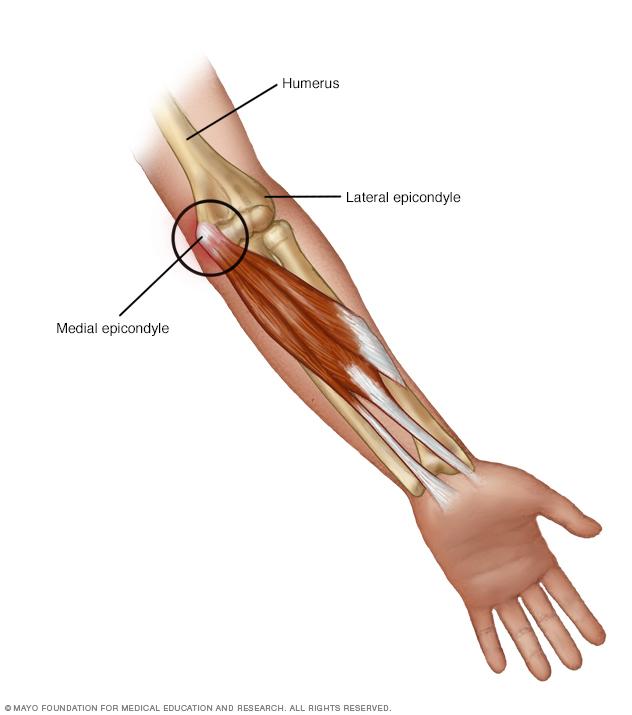
Golfer’s elbow is an injury that involves the forearm muscles, or the muscles that attach from the wrist up to the inner elbow area. These are the muscles that are responsible for twisting the wrists. Although it is an injury frequently seen with golfers, other activities with repetitive twisting motions can experience this condition.
What are the Causes and Symptoms of Golfer’s Elbow?
Symptoms of golfer’s elbow typically develop gradually over time. The pain can start fairly mild and worsen over time. The main symptoms include pain or tenderness along the inner bump of the elbow or your “funny bone.” You may also notice reduced strength in your grip.
Common Symptoms Include:
- Elbow Pain and Tenderness: The pain is usually felt near the inner side of the elbow and can extend to the rest of your forearm.
- Weak Muscle Movements: The pain may feel worse with certain movements, or you may notice weakness that extends to your hands and wrist.
- Stiff or Numb Sensations: Different movements such as making a fist might hurt due to the stiff muscles. You may also notice a feeling of tingling that radiates to your fingers.
How to Prevent Golfer's Elbow?
A repetitive strong grip while swinging a golf club can cause an overuse injury of the wrist tendons. So, how it be prevented?
-
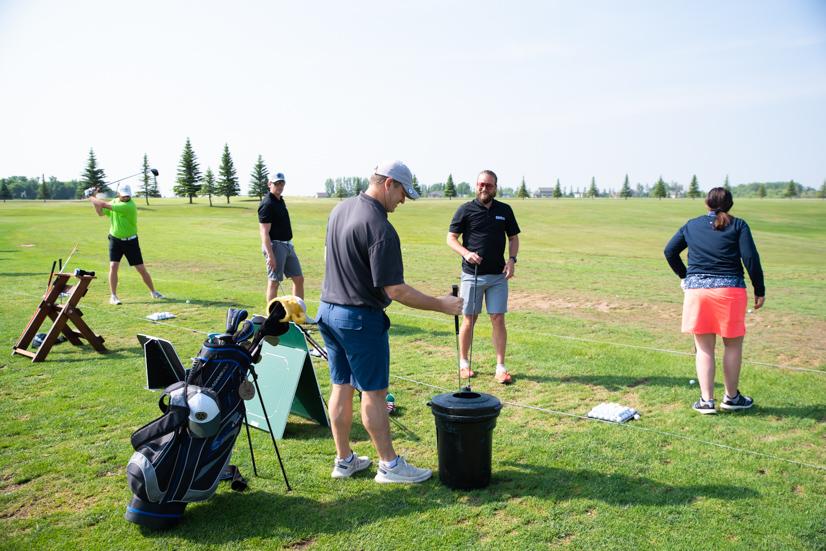
Warm Up: The forearm muscles should be stretched well and warmed up before you step on the course. Walk or jog for a few minutes to warm up your muscles. Then do gentle stretches before the game.
- Practice Form: It pays to have proper form when golfing. Lessons are strongly recommended if you are just getting started to ensure you learn proper form from the start.
- Check Equipment: Ensure you are using the proper gear for your game to prevent injury. Connect with a local pro shop to get assistance finding the right gear for you. Often times lighter graphite clubs are preferred to reduce the risk of elbow injury.
- Stay Hydrated & Rest: Don’t forget to stay hydrated out on the course. Bring extra water with before you head out. It is also important to rest when needed. Listen to your body and take a break if you notice any pain or discomfort.
- Cool Down: After the game, ensure you allow enough time to stretch the muscles. See below for a recommended stretch that you can add to your post-game routine.
How to Treat Golfer's Elbow?
- Ice: Icing the elbow for 15-20 minutes several times per day can help your golfer’s elbow.
- Brace: Your provider might recommend to wear a brace on your arm to help reduce muscle and tendon strain.
- Stretching: Specific strength training exercises are effective at alleviating pain. Your physician may refer you to Altru’s Physical or Occupational Therapy for recommendations on specific exercises.
- Rest: Put your golf game or any repetitive activity on hold until the pain is gone. Continuing to overuse an injured muscle can worsen your condition.
What Stretches or Exercises are Recommended for Golfer’s Elbow?
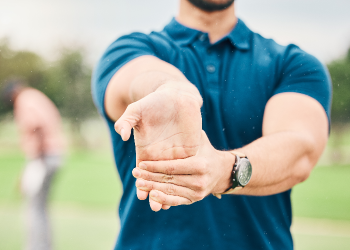
Luckily there are some stretches and exercises that can help manage the symptoms of golfer’s elbow. One stretching technique is to hold your arm straight out in front of you with your palm facing up and gently pull your hand and fingers back towards your body with your other hand. Hold this stretch for 30 seconds, and then relax. Practice this easy stretch a few times throughout the day to help ease the tension.
When to See a Provider
Your elbow pain should ease up with rest, icing, and stretching. We recommend that you see a provider if you experience the following symptoms:
- Your elbow is hot and inflamed, and you have a fever
- You can't bend your elbow
- Your elbow looks deformed
Our team at Altru Orthopedics & Sports Medicine look forward to getting you back in the “swing” of things. Call 701.732.7700 or visit MyChart to schedule an appointment.


